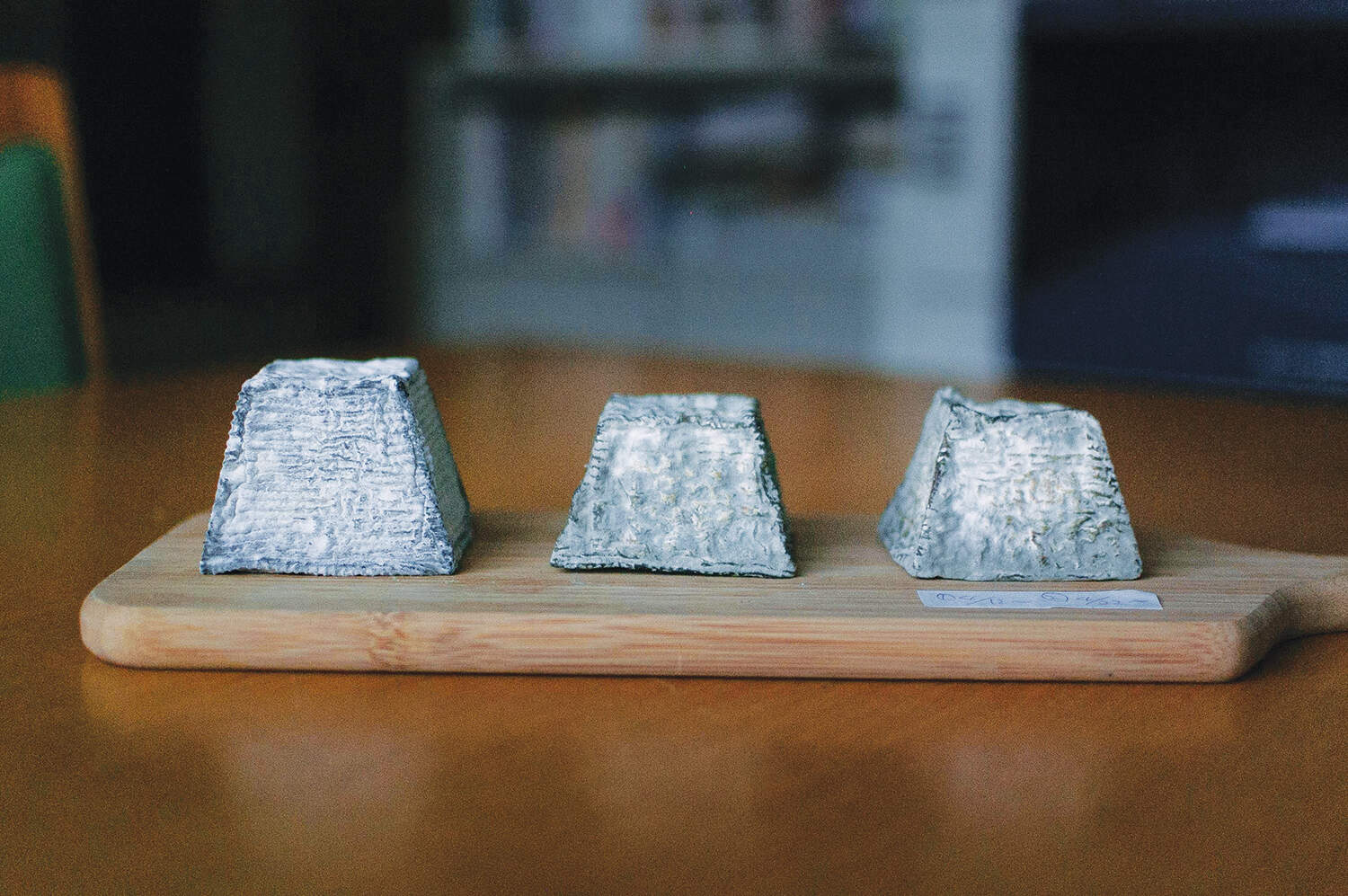
You may have never given a thought to Japanese cheese, but we won’t blame you. Asian countries aren’t exactly famed for fromage, and you’ve probably never seen a Japanese wheel behind your local cheese counter. But think about it: Doesn’t Japan already possess many of the prerequisites for a thriving cheese scene? There’s a history of complex culinary traditions and fervent fermentation. There’s a culture famously hungry for invention that’s open to new ideas. Oh, and the Japanese literally discovered umami.
All over the world, Japanese artisan cheese is flying under the radar. At the same time, the number of artisan cheesemakers in Japan continues to climb. In a country that’s never been considered a dairy destination, these makers are testing the limits of what cheese encompasses, circumventing the traditions of Europe to create something unique and entirely their own. Below are 5 cheesemakers to keep an eye on.
1. Mirasaka Fromage
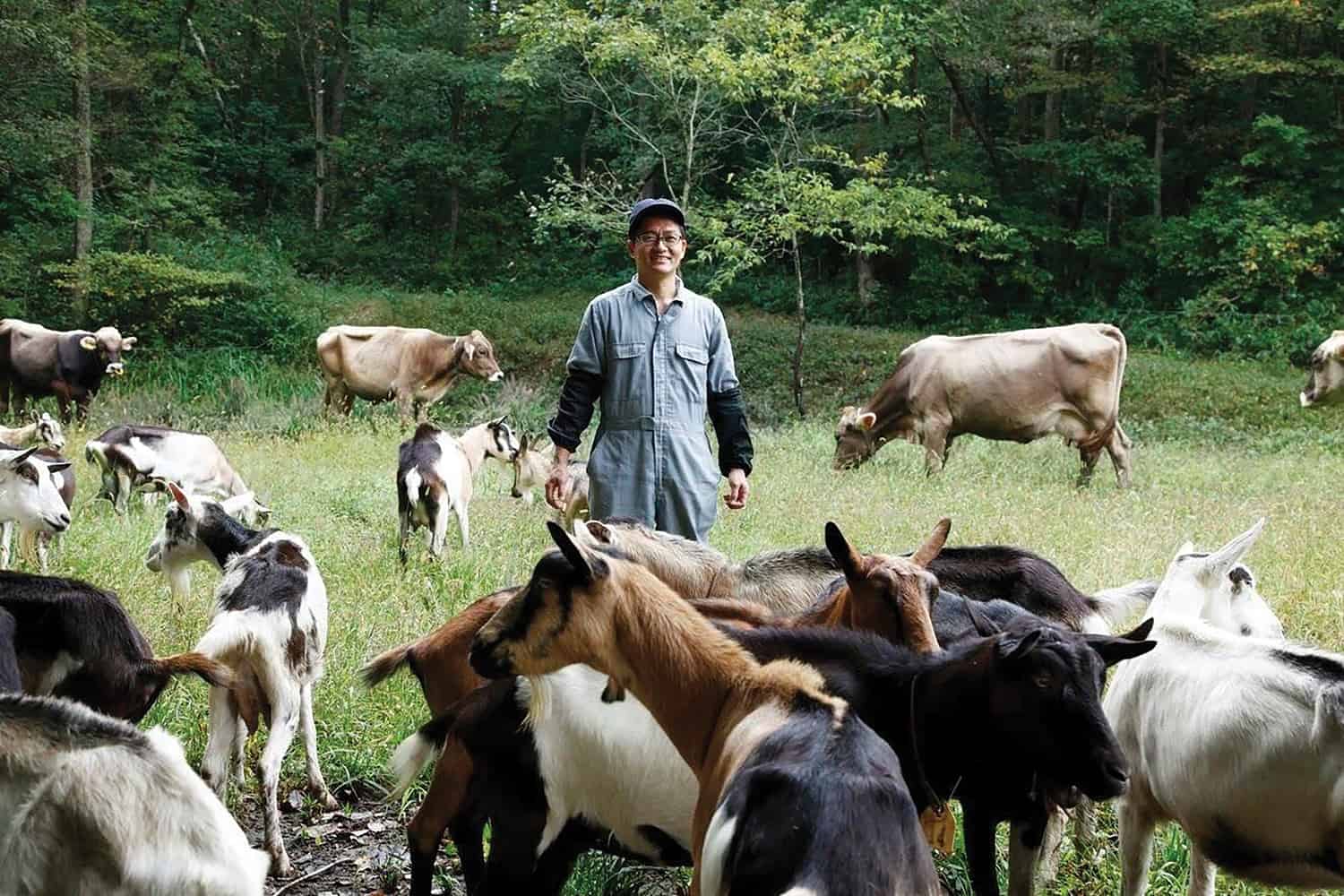
Cheesemaker Masanori Matsubara and his goats.
Masanori Matsubara used to question the environmental impact of dairy farming. As a young man, he worked several jobs on commercial dairies in the United States and Australia. Those experiences made him wonder: Is it possible to produce cheese in a way that truly values the health of the land and the happiness of the animals?
Matsubara’s quest began with a trip to France in 2004 to study cheesemaking. Three years later, he returned to Japan to establish Mirasaka Fromage—his very own artisan farmstead—in the forests of rural Hiroshima Prefecture.

Mirasaka Fromage’s herds of goats and Brown Swiss cows now graze freely in a mix of pasture and partially cleared forest. Diets vary according to the season, alternating between grasses in the spring and fallen chestnuts in autumn.
Matsubara responds to his milk’s seasonal fluctuations by approaching each cheese as a work of art. Sakura Mochi (さくらもち), his springtime creation, shares an uncanny resemblance to the Japanese dessert with the same name. Carre de Lavende, topped with a sprig of lavender, is released in the summer. Lastly, Jyukushi Kaki (じゅくし柿), his washed-rind autumnal cheese, is made to directly resemble a ripe persimmon.
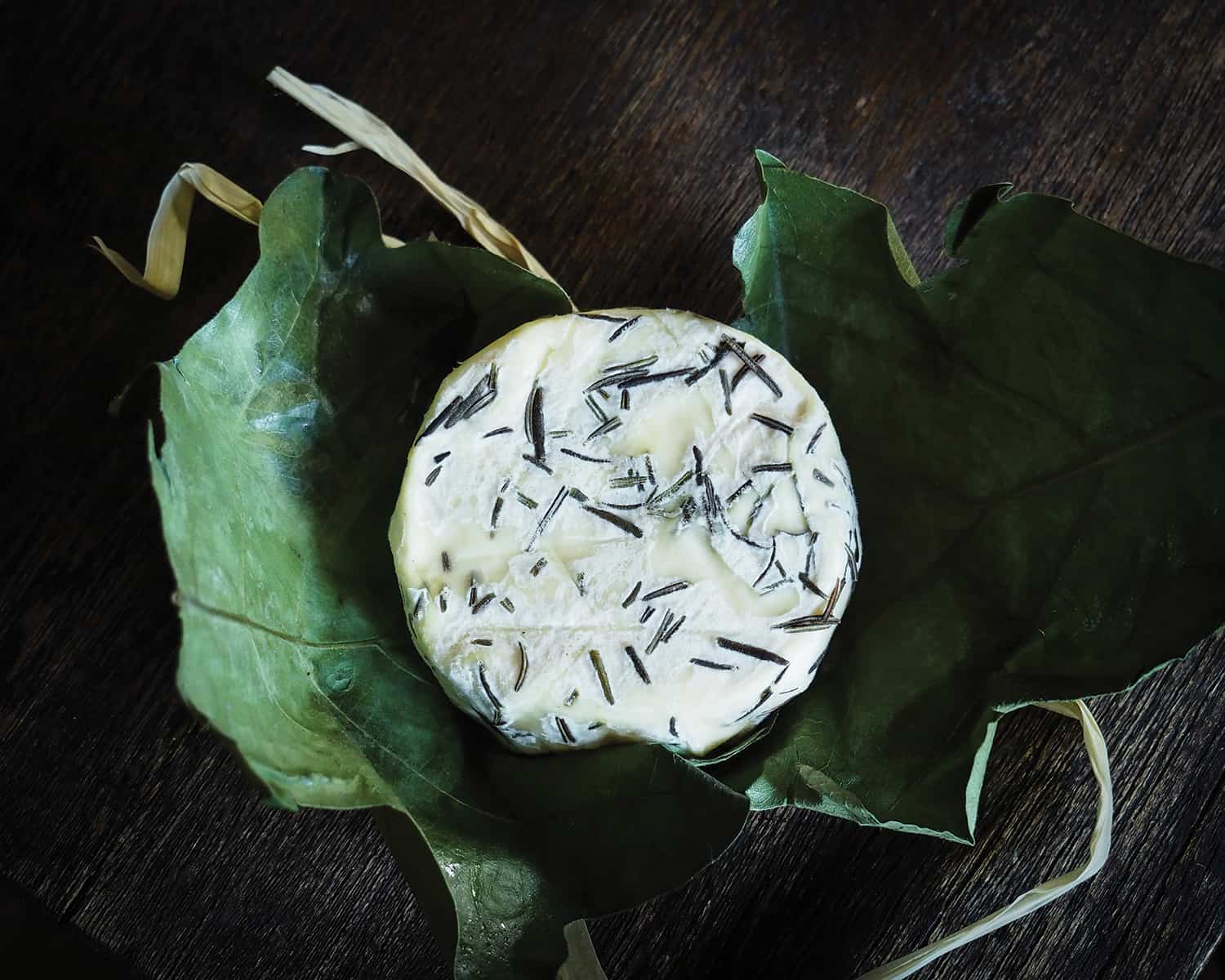
Fromage de Mirasaka with Rosemary
As for year-round options, Mirasaka’s award-winning Fromage de Mirasaka is wrapped in an oak leaf and produced in both goat’s and cow’s milk varieties. The former was awarded silver at the 2013 Mondial du Fromage, while the latter took home gold at the very next Mondial du Fromage in 2015.
Matsubara’s cheeses have recently garnered major attention—though his journey is far from over. Mirasaka Fromage will continue to set the urgent example, both at home and abroad, of what it takes to manufacture a dairy product while maintaining an intricate balance with nature and the seasons.
2. Fromagerie Sen
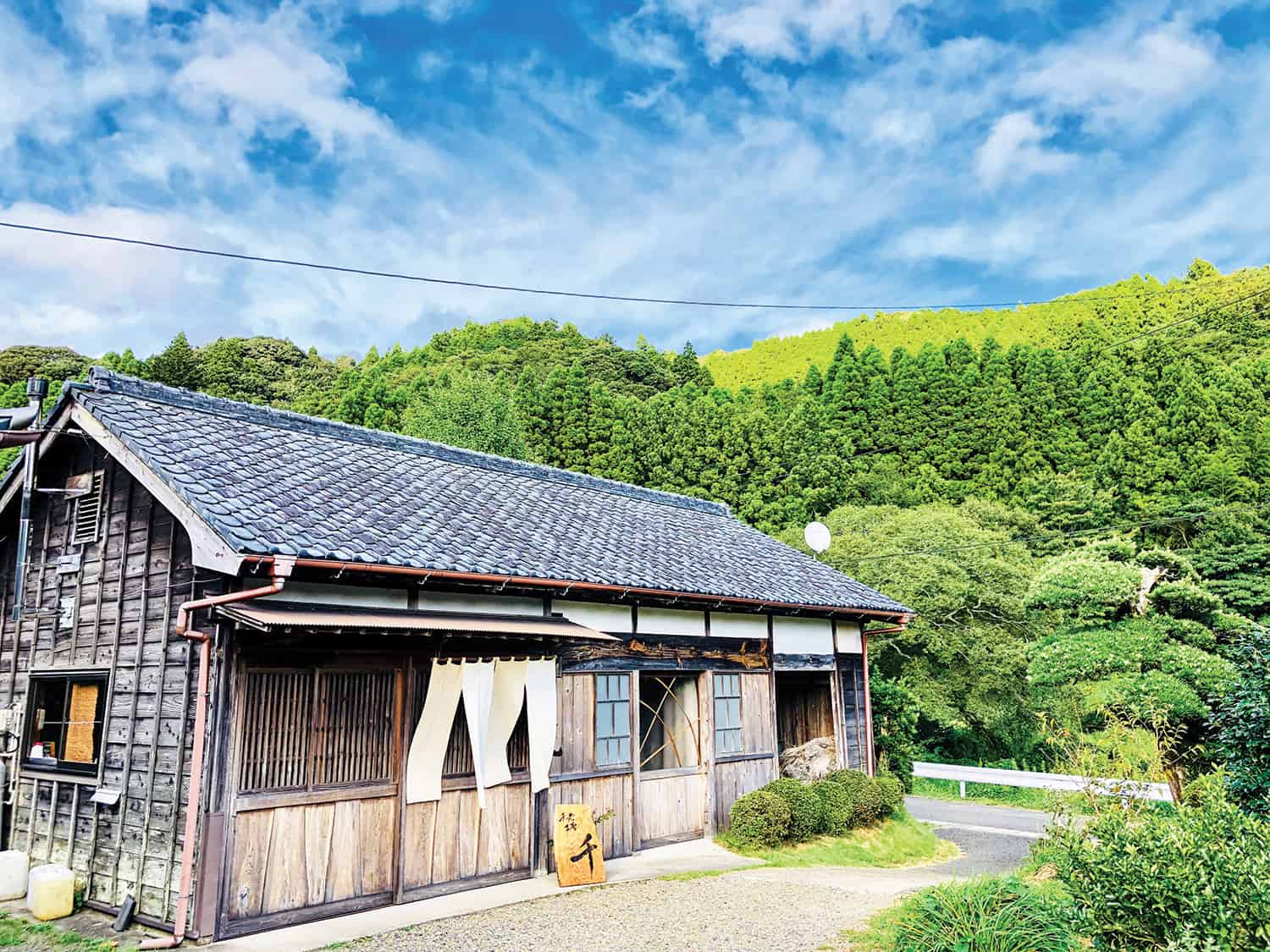
Fromagerie Sen
Microbes—which play a role in every step of the cheesemaking process—are what drew Chiyo Shibata to the cheese industry. A trained microbiologist and artisan producer with a deep understanding of tiny life forms, she’s amassed an impressive following among Japanese cheese lovers.
Shibata launched Fromagerie Sen from a cheese room next to her traditional cottage in the town of Otaki, an hour-and-a-half outside Tokyo. Sourcing her milk from a Holstein herd on a neighbor’s farm less than 200 feet away, the cheesemaker has since directed efforts back into her local community—the fromagerie hosts a small market in Otaki on the first Sunday of each month. It’s a festive atmosphere that gathers various folks from around Chiba Prefecture. Cheeses tend to sell out quickly, so the crowds come early.
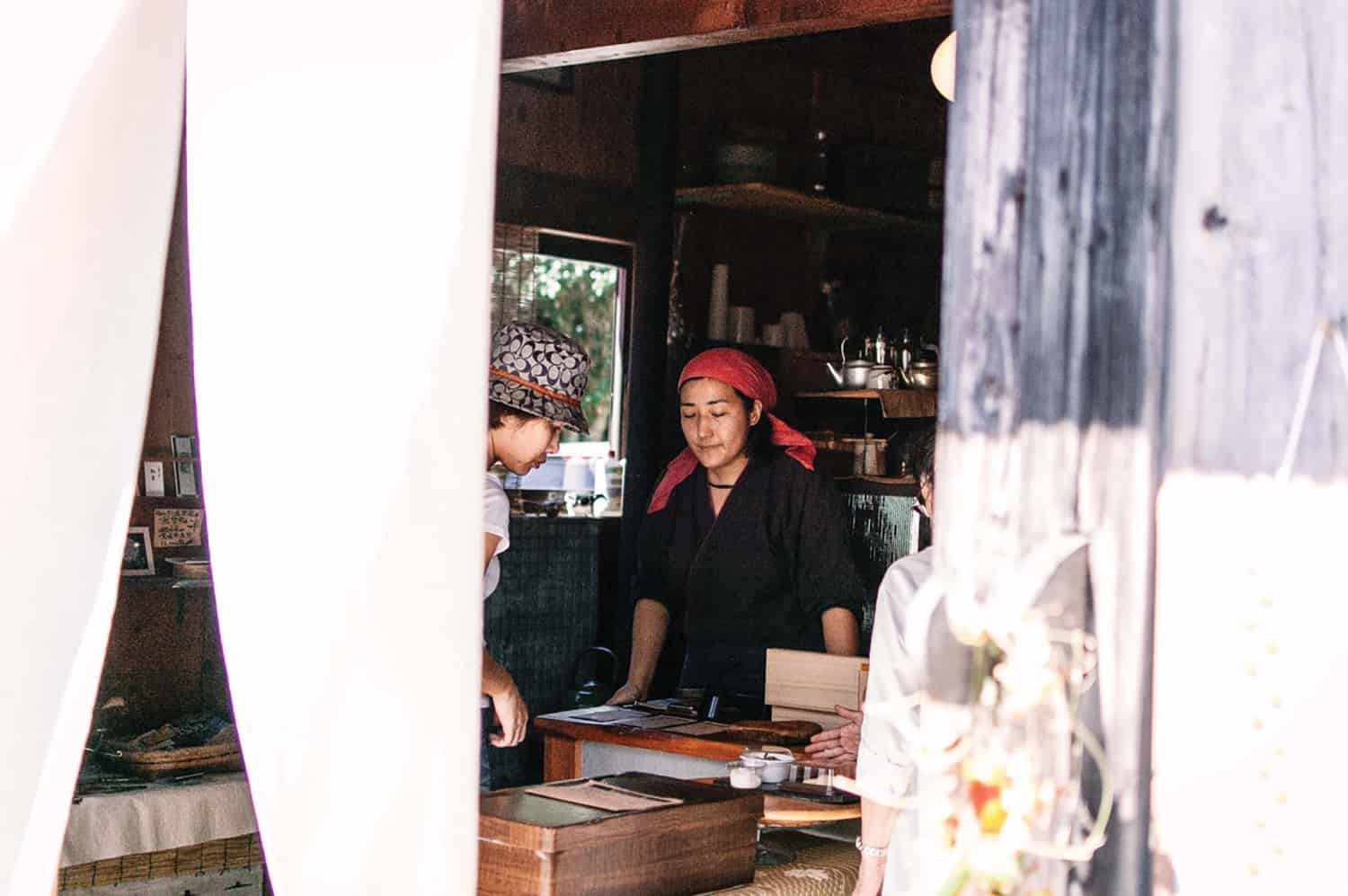
Chiyo Shibata
Fromagerie Sen’s popularity is largely the result of Shibata’s success at the 2016 All Japan Natural Cheese Contest. The award-winning cheese, Takesumi (竹すみ), is dusted in bamboo ash, aged on site, and formed to resemble a soft round of mochi.
Shibata, though, hasn’t overlooked the microorganisms that remain hard at work. During tastings, the cheesemaker exhibits her own bacteria cultures in petri dishes while extolling the microbiological benefits of raw-milk cheesemaking. A proponent of indigenous Japanese microbes, she’s recently created an exclusive label for Japanese cheeses produced using native cultures. Like some of the most devoted artisanal producers around the world, Chiyo Shibata reminds us of the importance of local microbial terroir.
3. Atelier de Fromage
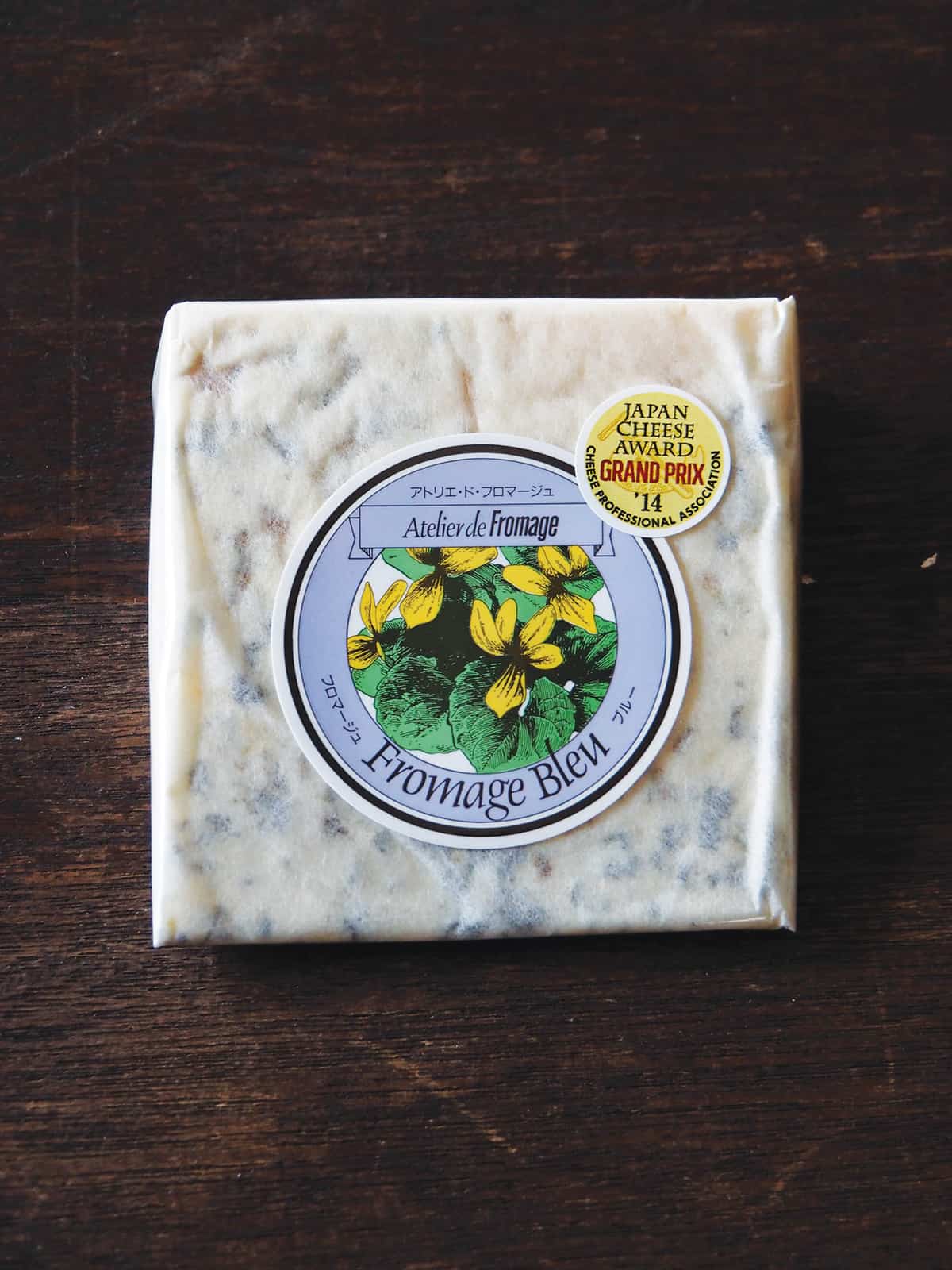
Atelier’s award-winning Fromage Bleu
Outside of Japan, Nagano Prefecture is best known as a mountain destination with ski slopes and hot springs. Increasingly, however, the land-locked region has also attracted Japanese artisanal cheesemakers in search of quality pastures and pristine mountain water.
Such was the case back in 1980, when Shigeo and Yoko Matsuoka left behind corporate careers to explore natural cheese production. However, they quickly realized that the production of a quality brie or camembert style would first involve a journey to France.
Shigeo and Yoko spent an entire year studying cheesemaking at the French Ecole Nationale d’Industrie Laitière. Upon their return home, the duo purchased a small cheese room in Nagano and, beginning with the production of fromage frais and camembert, established Atelier de Fromage in 1982.
The Nagano couple were the first artisan cheesemakers in Japan to produce either a brie style or a fromage frais. The range has now expanded to over 20 different cheeses, many of which can be found at their very own restaurant in Tokyo. Instead of resting on their laurels, however, Atelier de Fromage continues to send their cheesemakers on regular trips to France to expand their knowledge of different styles.
Atelier’s Fromage Bleu, inspired by French recipes, is a cow’s milk blue resembling the varieties of Southern France, like Roquefort or Bleu de Causses. With creamier and stronger flavors than most other blue cheeses found in Japan, it’s been a regular favorite at Japanese cheese contests. It even managed to earn a Super Gold at the 2015 Mondial du Fromage in France.
Nowadays, Atelier de Fromage is far from the only artisan cheese producer in Nagano. However, the cheesemaker’s commitment to French tradition and its award-winning blues prove that the mountains of Japan offer more than skiing and onsens.
4. Ima Farm Cheese Factory

Chausudake at different ages
Ima Farm, located in the volcanic, forest-covered Nasu Highlands of Tochigi Prefecture (a few hours north of Tokyo), relies upon its healthy herds of Saanen goats, Brown Swiss cows, and Holstein cows to generate unrivaled European-style cheeses. For Yuko and Yukari Takahashi, producing high-quality milk has always been the top priority.
In 2002, Yuko spent a year studying dairy farming in northern Germany. He returned to Japan inspired by age-old cheeses and European milking techniques. Since then, he’s visited Europe on successive occasions with the aim of expanding the farm’s repertoire of goat cheeses.
Ima Farm produces fresh cow and goat varieties, two washed rinds, a couple of aged goat cheeses, and one semi-hard wheel. Each cheese is given a specific name corresponding to a location within the Nasu region. Japanese cheeses deserve to be named in the same way that many traditional European cheeses were named based upon region of origin, argue Yuko and Yukari.
Ima Farm’s Chausudake (茶臼岳), named after a local mountain meaning “tea grinder peak,” resembles French Valençay with an ash-dusted exterior and truncated pyramid shape. Chausudake rose to prominence in 2018 when an invited judge from France awarded it “Foreign Favorite” at the biannual Japan Cheese Awards.
Recent success hasn’t interfered with the Takahashis’ shared vision of what’s important. In 2016, Yuko told a reporter that “you can make bad cheese from good milk, but you can never make good cheese from bad milk.” Luckily for Ima Farm, emphasis remains on a happy herd and its precious milk.
5. Kyodogakusha Shintoku Farm
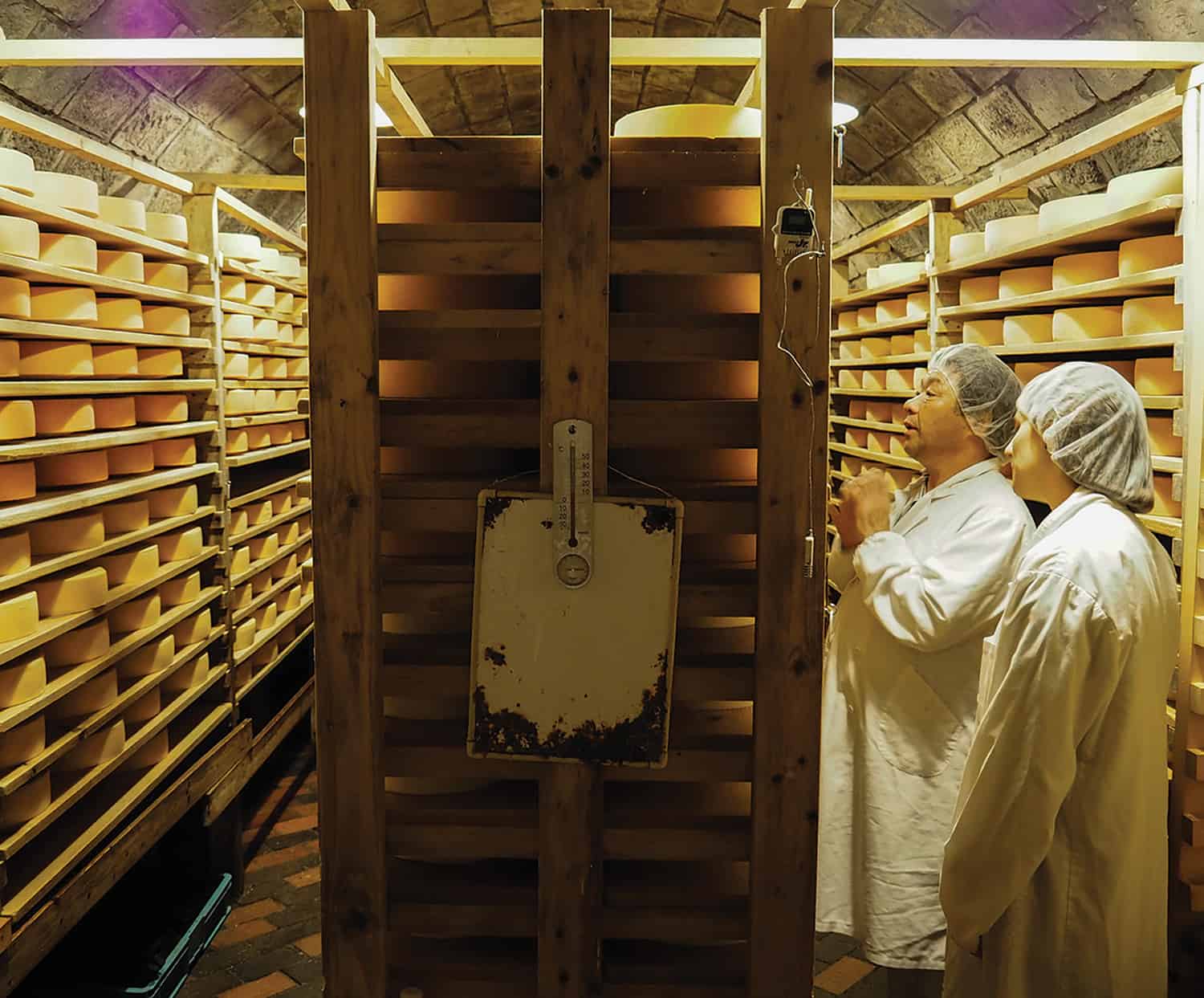
Nozomu Miyajima in his raclette cave.
Two and a half hours east of Sapporo, on Japan’s mountainous northern island of Hokkaido, Kyodogakusha Shintoku Farm sits in the shadow of a dormant volcano. The location is no coincidence. Award-winning cheesemaker Nozomu Miyajima attributes his cheesemaking success in large part to the region’s volcanic soils and naturally filtered waters.
After finishing his dairy science degree at Wisconsin State University, Miyajima established Kyodogakusha in 1989. Upon returning to Hokkaido, he was gifted 30 acres by the local government on the condition that he provide work for disadvantaged locals.
Having since expanded to 150 acres, Kyodogakusha operates as a full-scale biodynamic farm and dairy. With a Japanese craftsman’s attention to detail, Miyajima even designed a step-down, pumpless system allowing for the natural flow of milk from parlor to cheese caves.
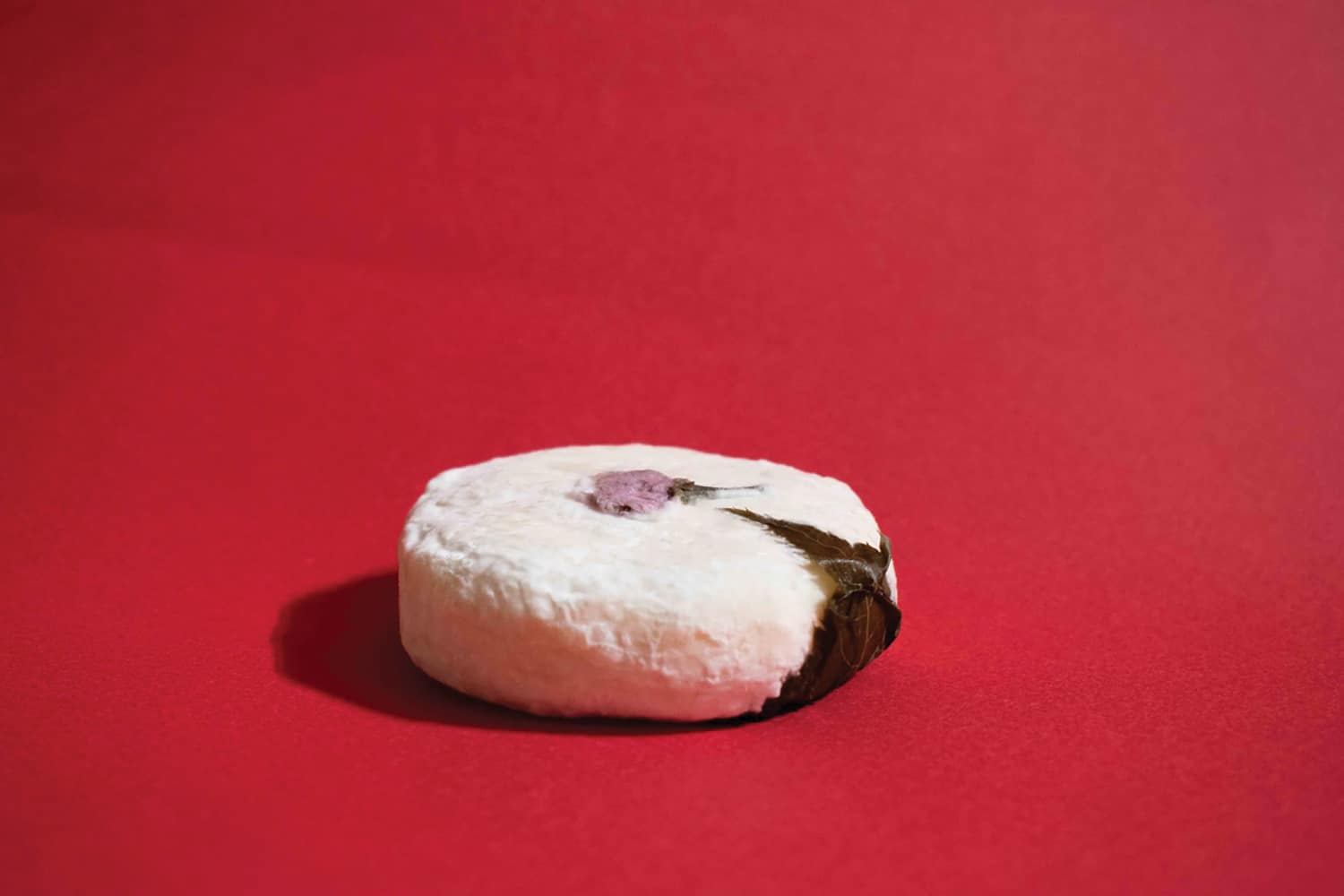
Sakura
Balancing craft and terroir, Miyajimahas developed a distinctive collection of Japanese cheeses: Sakagura (酒蔵) is washed in local sake, Yachi Yanagi (ヤチヤナギ) is dusted with locally harvested Dutch myrtle, and Sasayuki (笹雪), a camembert style, is wrapped in bamboo leaf picked on the farm.
Creatively incorporating Japanese elements has earned Miyajima recognition on the world stage. Kyodogakusha’s Sakura, an homage to Japan’s iconic springtime blossom, won Gold at the 2015 Mondial du Fromage competition in France. Wrapped in a shiso leaf, the cheese comes ornamented with a single pickled cherry blossom. Another award winner, Kyodogakusha’s Raclette, brought home second in its category at the 2010 World Championship Cheese Contest in Wisconsin. Miyajima claims the Raclette’s unique character comes from the hot spring water used to wash the cheese during aging.
While a perfect environment doesn’t guarantee an award-winning dairy product, Miyajima—like many others around the world—has demonstrated that an awareness of nature and a creative vision go hand in hand with success in the cheese industry.



